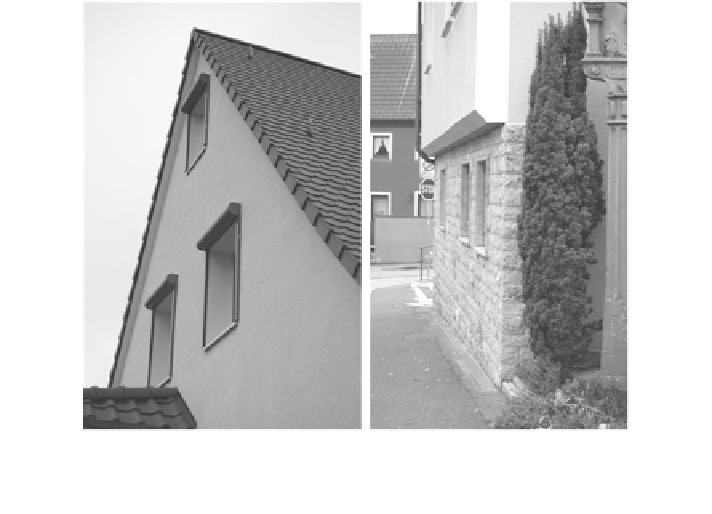Civil Engineering Reference
In-Depth Information
Fig. 2 Left A thick insulation layer influences the façade view at the interface façade/window.
Right Not completed insulation due to the fact that the insulation had to be mounted close to the
surrounding property
where the thermal insulation layer had to be mounted close to surrounding
property, the required insulation thicknesses could often not be applied because of
legal regulations. Last but not least due to the later attachment of a thermal
insulation, the proportions of the building will be shifted, which often influences
architecture, especially the façade, in a negative way, and diminishes the aesthetic
general impression.
These above-mentioned facts initiated a lot of new developments in the field of
thermal insulations with the objectives to provide a customised product with
extremely low thermal conductivity values, the superinsulation. International
coordinated research activities took place within IEA working groups (Binz et al.
2005
; IEA
2012
) and various public and non-public research projects in Europe
(Berge and Johansson
2012
; Stahl et al.
2012
), America (Mukhopadhyaya et al.
2008
; Kosny et al.
2013
) and Asia (Wen et al.
2009
; Kwon et al.
2009
).
2 Heat Transfer within Thermal Insulations
Within a porous insulation material, heat is transported by three different mech-
anisms: conductive heat transfer via the solid backbone, heat conduction within the
gas phase and radiative heat transfer (cf. Fig.
3
). Convection, i.e. the transport of
energy by free or forced convective gas flow, does not occur in thermal insulations

